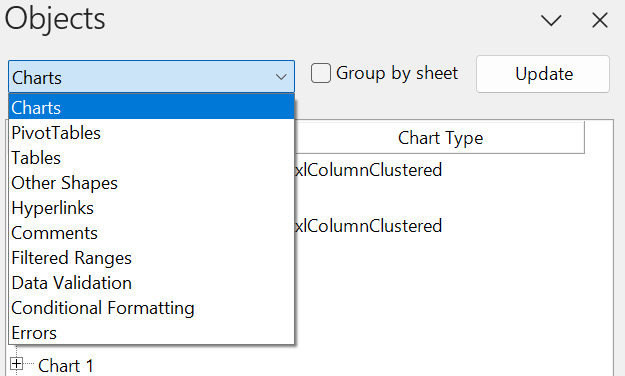Explore Formula
Explore a formula’s components and values, and easily navigate to referenced locations.
Tip: Drill down into the formulas of referenced cells to quickly understand the logical flow. Note that if you drill down into a multi-cell address, the first cell is explored.
Sheets
Efficiently manage large workbooks with a vertical pane for navigating and rearranging sheets via drag-and-drop.
Additional features include multi-sheet renaming, extracting, and removing.
Rename Options
Rename multiple sheets at once:
Add Text: Add a text at the beginning or end of selected sheet names.
Find and Replace: Update sheet names by searching for specific text and replacing it with new text.
From Selection: Import a list of sheet names from an Excel range, giving you full control over the renaming process.
Extract/Remove Options
Streamline workbook management with:
Extract Sheets: Create standalone copies of selected sheets, ideal for sharing specific data without links to the original workbook.
Remove Sheets: Delete sheets and convert any formulas referencing those sheets to values, ensuring formula integrity.
Other Options
Convert to Values: Convert all formulas, PivotTables, and Excel tables in the selected sheets to values, preserving data without formulas.
Save as Separate File: Save each selected sheet as an individual file.
Create Links: Generate a list of links to each selected sheet, making it easy to create a table of contents.
Objects
The Objects pane offers a clear overview and quick access to different elements in your workbook, including:
Charts and other shapes
PivotTables and Tables
Hyperlinks (with broken links highlighted)
Filtered ranges
Special cells (errors, conditional formatting, data validation)
Tip: Use this pane to spot errors before sharing your workbook, clean up unnecessary conditional formatting to boost performance, and get a quick snapshot of your content.
Back
Return to the last active cell before the navigation tool was used.
Note: You can cycle through the last 10 active cells.




